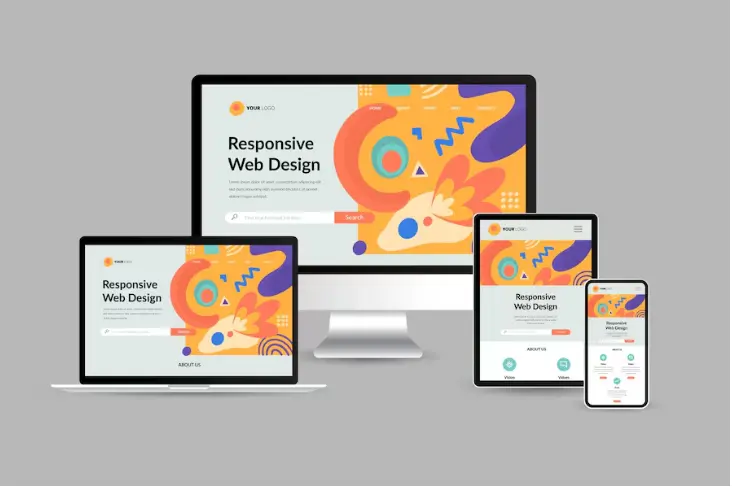X

Responsive design allows your site to adapt seamlessly to different screen sizes, providing users with an optimal experience whether they’re on a smartphone, tablet, or desktop. This blog post will delve into the fundamentals of responsive design, compare popular responsive web page builders, and highlight reputable responsive website design agencies, helping you make informed choices for your website.
Table of Contents
Responsive design is an approach that enables websites to adjust their layout and content dynamically based on the device accessing them. This technique utilizes fluid grids, flexible images, and CSS media queries to ensure that websites look and function well across various devices and screen sizes.
Responsive design is best defined by its commitment to user experience and accessibility. Unlike adaptive design, which serves different layouts based on device detection, responsive design provides a single layout that adjusts fluidly. This adaptability is essential for SEO, as search engines like Google favor mobile-friendly sites. A well-implemented responsive design enhances usability, reduces bounce rates, and improves user engagement, which can lead to higher conversion rates.
Responsive web page builders are tools that empower users—especially those without technical skills—to create responsive websites easily. These builders typically offer drag-and-drop functionality, making it simple to design a professional-looking site without writing code.
When selecting a responsive web page builder, consider these essential features:
Choosing the right responsive web page builder depends on your technical expertise and specific needs. Beginners may prefer user-friendly options, while more experienced users may prioritize customization and SEO tools.
Responsive web design agencies specialize in creating websites that deliver an optimal user experience across all devices. They offer a range of services, from initial design concepts to full-scale development and ongoing support.
When selecting a responsive web design agency, consider these factors:
Choosing the right agency involves assessing your specific needs, budget, and the level of customization you require. It’s essential to align with an agency that understands your vision and can deliver results.
Consider the case of a local restaurant that transitioned to a responsive website with Themelooks Ltd. After launching their new site, they reported a 40% increase in mobile traffic and a 25% rise in online reservations within just three months. This shift not only enhanced their visibility but also improved customer engagement, leading to more frequent visits.
Research indicates that responsive design can boost conversion rates by as much as 30%. Google emphasizes the importance of mobile-friendliness in its ranking algorithms, meaning a responsive design can significantly impact your site’s visibility and search engine performance. A seamless user experience reduces bounce rates and encourages visitors to explore more of what your site has to offer.
Responsive design is no longer optional; it’s a critical component of any modern website. By understanding the available tools and agencies, you can make informed decisions that align with your business objectives. Whether you choose a web page builder for DIY projects or partner with a responsive design agency like Themelooks Ltd, investing in a responsive design will pay dividends in user satisfaction and engagement.
Just fill up the contact form to get a free consultancy from our expert. We would be happy to answer you.
ThemeLooks – YouTube – Facebook – Linkedin – Twitter